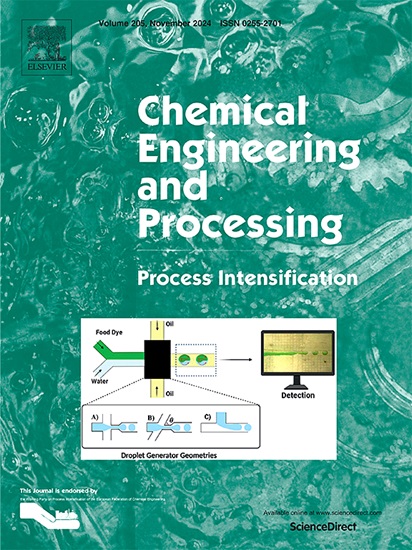基于CFD和降阶法的弯管冲蚀场预测
IF 3.8
3区 工程技术
Q3 ENERGY & FUELS
Chemical Engineering and Processing - Process Intensification
Pub Date : 2025-04-14
DOI:10.1016/j.cep.2025.110320
引用次数: 0
摘要
本文通过对 ROM 预测结果和计算流体动力学(CFD)结果进行综合比较,研究了机器学习算法 Reduced Order Model(ROM)在预测气固两相流管道系统的流体动力学行为和侵蚀磨损现象方面的准确性和效率。首先,通过与实验数据对比,验证了 Oka、Vieira 和 DNV 三种侵蚀模型的 CFD 模拟结果的准确性。结果发现,Oka 模型在预测管道中多相流的侵蚀现象方面更为精确。其次,研究了 ROM 预测的合理性和效率,发现水动力多相流行为和侵蚀磨损现象的趋势与 CFD 结果一致。此外,研究还发现,与 CFD 方法相比,ROM 预测可节省三个数量级以上的计算时间。第三,研究了设计点和模式数对静压和侵蚀率分布的影响,以提高 ROM 预测的准确性。然后,为了全面验证 ROM 预测结果,分析了不同气体入口速度和颗粒质量通量的四种运行条件。结果表明,在推荐的设计点和模式数选择下,ROM 预测结果与 CFD 结果在定量和定性方面都有较好的对应关系。最后,在 135 度工业管道上使用了 ROM 预测,通过与工业测量数据进行比较,及时准确地预测了气体颗粒工业弯管的侵蚀位置和侵蚀速率。本文章由计算机程序翻译,如有差异,请以英文原文为准。

Prediction of bend-pipeline erosion field based on CFD and reduced order method
In this paper the accuracy and efficiency of the Reduced Order Model (ROM), a machine learning algorithm, for predicting hydrodynamic behavior and erosion wear phenomena in a gas-solid two-phase flow pipeline system were investigated by performing a comprehensive comparison between ROM predictions and Computational Fluid Dynamics (CFD) results. Firstly, the accuracy of CFD simulation results among three erosion models, Oka, Vieira and DNV erosion models, was validated by comparison with experimental data. The Oka model was found to be more precise in predicting the erosion phenomena of the multiphase flow in pipeline. Secondly, the rational and efficiency of ROM predictions were examined, which the tendencies of hydrodynamic multiphase flow behaviors and erosion wear phenomena were discerned in agreement with CFD results. Furthermore, it is found that ROM predictions could save computational time by more than three orders of magnitude compared to the CFD method. Thirdly, the influence of design points and mode number on static pressure and erosion rate distribution was studied to enhance the accuracy of ROM predictions. Then, for a comprehensive validation of ROM predictions, four operating conditions with different gas inlet velocities and particle mass fluxes were analyzed. The result indicates that ROM predictions, under the recommended selection of design points and mode number, demonstrate a relatively good correspondence with CFD results both quantitatively and qualitatively. Finally, ROM predictions were utilized on a 135-degree industry pipe, enabling prompt and precise prediction of both the erosion position and erosion rate for the gas-particle industrial elbow pipe by conducting a comparison with the industrial measurement data.
求助全文
通过发布文献求助,成功后即可免费获取论文全文。
去求助
来源期刊
CiteScore
7.80
自引率
9.30%
发文量
408
审稿时长
49 days
期刊介绍:
Chemical Engineering and Processing: Process Intensification is intended for practicing researchers in industry and academia, working in the field of Process Engineering and related to the subject of Process Intensification.Articles published in the Journal demonstrate how novel discoveries, developments and theories in the field of Process Engineering and in particular Process Intensification may be used for analysis and design of innovative equipment and processing methods with substantially improved sustainability, efficiency and environmental performance.

 求助内容:
求助内容: 应助结果提醒方式:
应助结果提醒方式:


